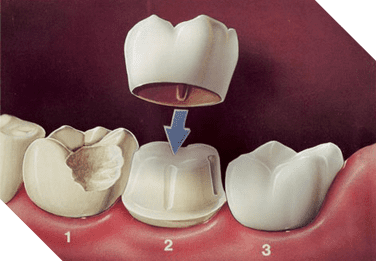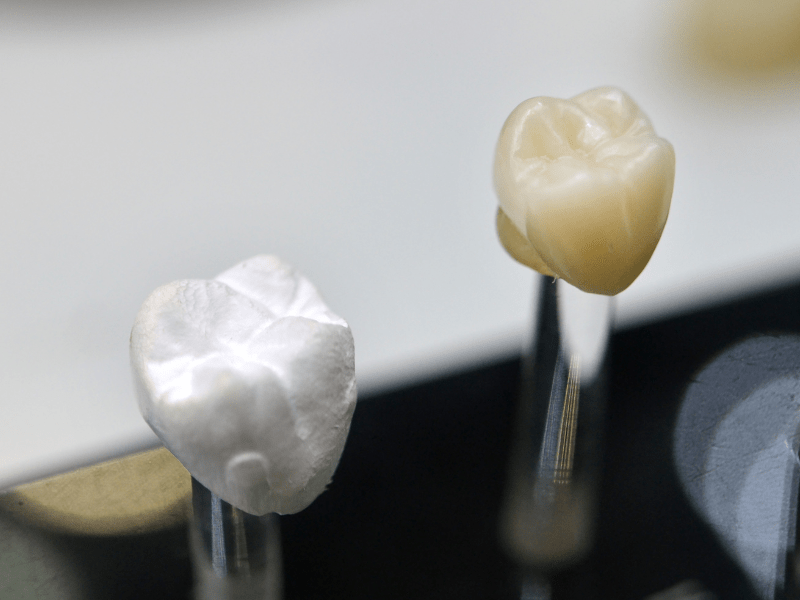The name “dental crown” might sound somewhat funny, but it actually describes the procedure fairly well: a dental crown looks like a “cap” that is placed over and attached to a tooth. Dental crowns can be made from a variety of materials, each with its own advantages and drawbacks. The most common materials used include:
STAINLESS STEEL
Stainless steel crowns are typically used only as a temporary measure (for example, as a placeholder for a permanent dental crown to be attached in the future), but their relative inexpensiveness make them a common crown choice for baby teeth. The crowns come premade, however, meaning that they can’t be customized to match a patient’s teeth. They are also a conspicuously silver color, an esthetic disadvantage that has made them less and less popular.
OTHER METAL ALLOYS
Of course, stainless steel isn’t the only kind of metal that can be used. Alloys made from gold, palladium, and even nickel or chromium can be used. The main drawback is, again, the look, but metal crowns do have the advantage of greater strength and durability. They typically last longer than other types of dental crowns, and don’t chip and crack as easily.
PORCELAIN MATERIALS
Dental crowns made from porcelain materials are typically the most common choice nowadays because they look exactly like an ordinary tooth. Dentists can fashion porcelain dental crowns to match a patient’s tooth exactly and install it so that the crown is indistinguishable to an outside observer. The crowns themselves are relatively durable, but can still chip or break off with pressure. Additionally, the crowns can cast a slight wearing effect on nearby teeth.
RESIN
Dental crowns can also be made from resin. These tend to be used the least often, however, because they are simultaneously the most expensive and most easily fractured dental crowns.
Why might I need a dental crown?
So, in what kinds of situations would you need a dental crown? What kind of damage would merit the treatment? Only a qualified dentist can diagnose your specific situation, but, for the most part, dental crowns are used:
-
- To repair and restore a broken tooth that has, for example, cracked in half, or a severely worn down tooth, which can happen to patients who are prone to teeth-grinding.
- To protect a weak tooth that is prone to decay and other damage.
- As an alternative to a cavity filling, though this is typically only explored as an option when the filling is so large that repairing the remaining tooth would be futile.
- To support a dental bridge or to cover a dental implant.
- To hide a misshapen or severely discolored tooth.

Questions about Dental Crowns?
If you want to know whether you could benefit from a dental crown or to learn more about the procedure, talk to one of our Mint Dental Alaska dentists. We can help you narrow down the best treatment type for your specific situation and restore your teeth to their original shine. Set up an appointment today by calling (907) 646-8672 or by visiting our website at mintdentalak.com!







